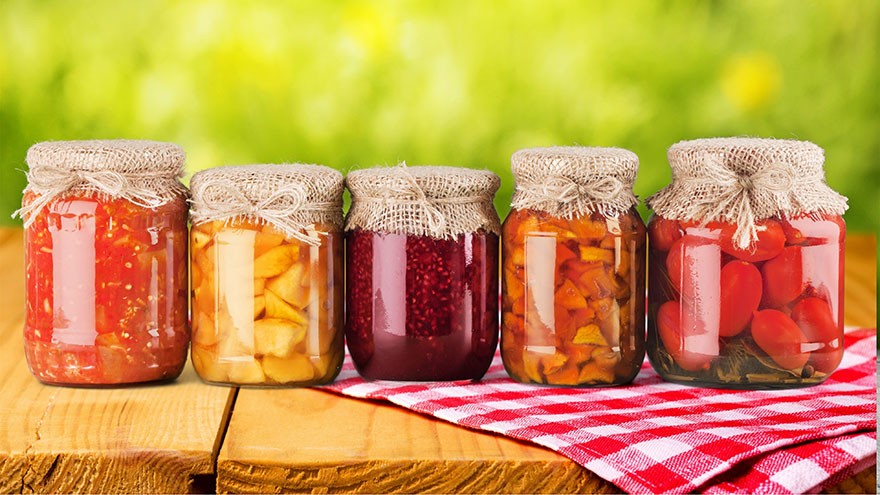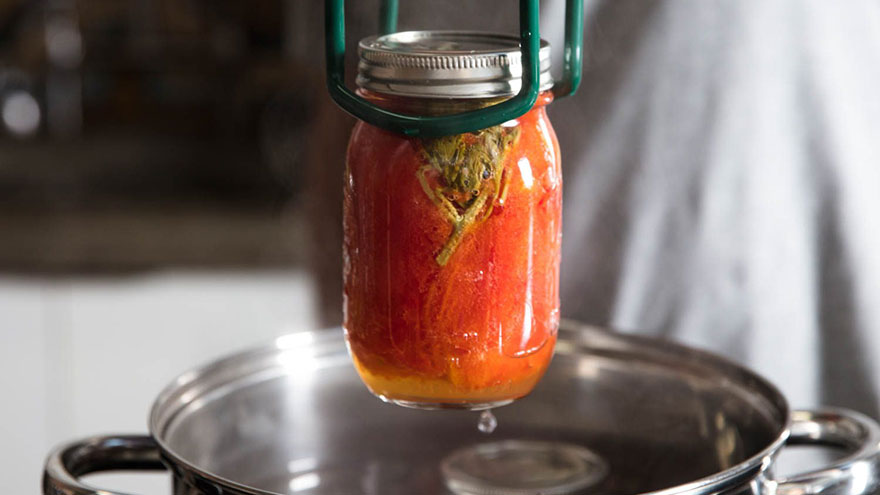What Are the Advantages of Canning Food?
According to The Wall Street Journal, the makers of canning jars say their sales are up 30% this year. They also report a project director for The National Center for Home Food Preservation (a program funded by the U.S. government) saying their canning classes are “flooded” and in higher demand than they’ve been in “many years.”
Home canning is back, and those who love to cook find many benefits to learning to can.
Advantages of Canning Food
Money
For those who grow their own fruits and vegetables, who hunt for their own meat, and who fish, canning is a money saver. The savings depend largely on what the gardener puts into his plot, but a savings of 50% is pretty common.

It doesn’t cost much to purchase canning equipment, either. A hot water bath canner (suitable for canning pickles, jams, jellies, marmalades, fruit butters, and fruits) is about $50 – and a very large pot with a well fitting lid can be used in its place. Even a high end pressure canner (necessary for canning vegetables and meats) costs only about $75.
Miscellaneous small tools don’t cost more than $10 or $20 total. Combine this with used canning jars, or slowly build up a collection of new canning jars and it won’t cost much more than $100 to purchase basic canning equipment.
Safety
It’s true that freezing works for most produce and meat, but canners never have to worry about power outages ruining their supply of preserved food.

Quality
For those who must purchase farm fresh produce, meat, or fish, canning probably won’t save money. But the quality of the finished product is far superior to anything sold in grocery stores. As any canner will tell you, home canned tomatoes are alive with flavor, making commercially canned tomatoes seem utterly bland and metallic-tasting.

Store bought canned tuna may taste fine, but when compared to home canned tuna? There’s just no comparison. The same is true for most everything a person might want to can.
It’s Green
Because almost everything used for home canning is reusable, canning is greener than purchasing commercially canned foods. Home canning jars, screw bands, and all the equipment needed for canning can be reused for decades.

Only traditional home canning lids are disposable, but for those wanting a greener alternative to these, new reusable lids are now available.
It’s Healthier
Because home canned foods contain no preservatives or dyes, home canned food is healthier than commercially canned food. For those worried about Bisphenol A (BPA, a potentially hazardous chemical used to line all commercially canned tins, and commonly found in food jar lids and plastic ware), canning also provides a haven.

Although traditional canning lids contain a small amount of BPA sandwiched between their layers, when properly processed, home canned food never touches the lid. In addition, the new reusable canning lids are BPA-free.
It’s Convenient
Once the canning is done, home canned food is just as convenient as commercially canned food.

Although basics are at the heart of home canning – for example, stock or preserved peaches in light syrup – some “meals in a jar” are also safe to home can, including chicken soup, beef stew, mixed vegetables and more.
Check out the video version of this article on YouTube

